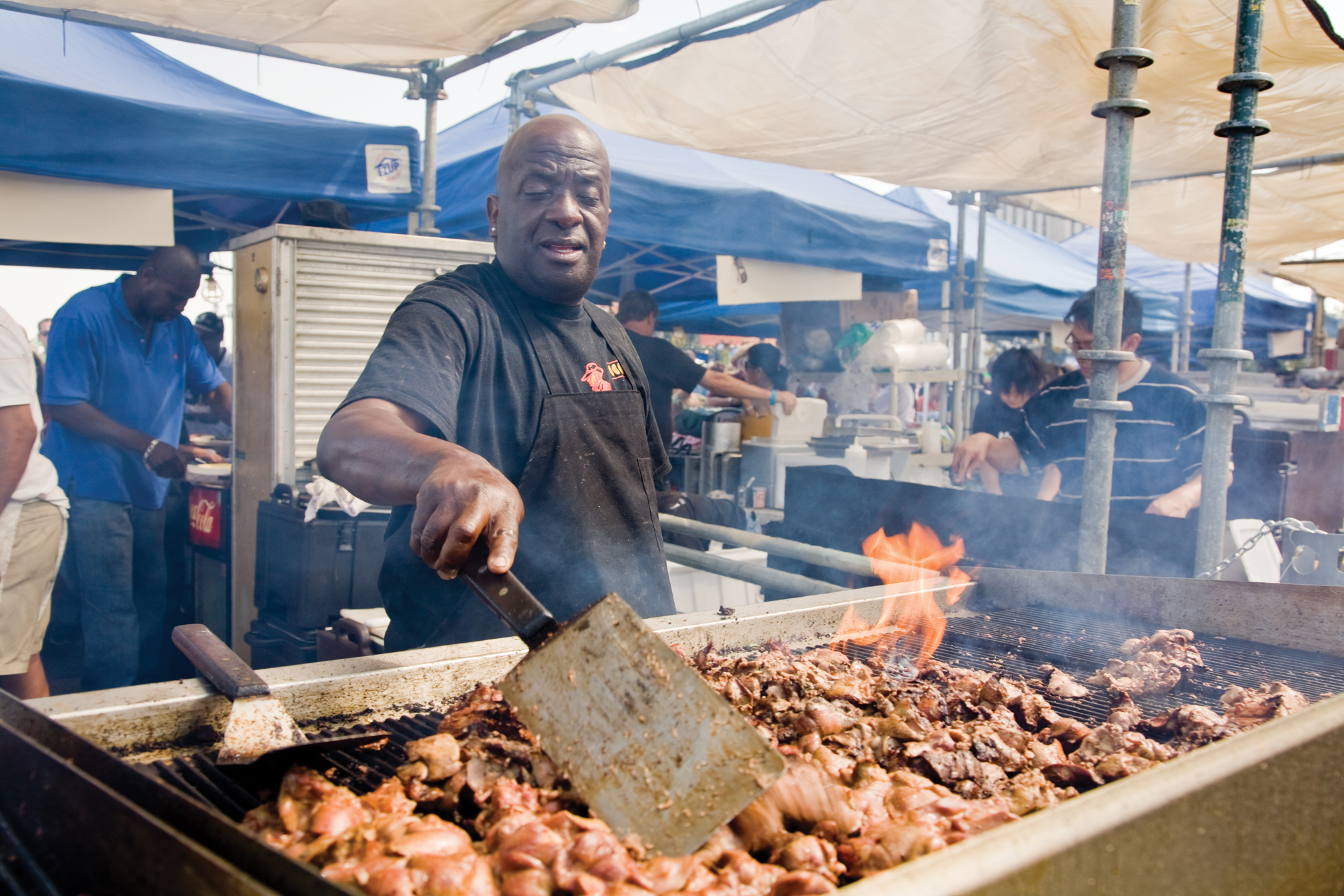 Lisette Sutton, the manager of Creole Delicacies, says she’s been in business long enough to know the whole reason behind French Quarter Festival. “The city tore up the sidewalk, and no one could get into the businesses around here,” she says. “The entrances were planks and everything. As a thank you, the city put on the fest, and it was such a huge success, well….”
Lisette Sutton, the manager of Creole Delicacies, says she’s been in business long enough to know the whole reason behind French Quarter Festival. “The city tore up the sidewalk, and no one could get into the businesses around here,” she says. “The entrances were planks and everything. As a thank you, the city put on the fest, and it was such a huge success, well….”
That was 1984. Twenty-six years later, more than 50 local restaurants and culinary organizations come together to put on the “World’s Largest Jazz Brunch,” as the French Quarter Festival calls it. And with approximately 500,000 people by the fest’s estimation attending the three-day festival, preparing can be tricky.
Doyle DeForest, Cake Artist at Flour Power Confectionery and six-year Fest veteran, says his best tool is organization. “I try to gauge from year to year how much I’m going to go through,” he says. “Last year was the first year we had anything left over. We just kept prepping more and more because we always sold out around 3 p.m. on Sunday, the last day. Last year, thunderstorms were predicted on Sunday and hardly anyone was out there. We donated what we had left over to the Bridge House. They ate really well that day.”
Required to produce thousands of portions of food a day in booths away from their kitchens, most of the restaurants have developed strategies to avoid such a thing.
“Because we do a fresh product, and because it is such a perishable item, everything has to be ready to go,” DeForest says. That means strawberries are cut at the last minute, but that doesn’t mean he doesn’t do what he can in advance. “We’re prepping really heavily on the Wednesday before. I go through 70 flats of strawberries, about 100 pounds of Creole cream cheese and 60 gallons of heavy whipping cream, everything fresh.”
Chef Damian Thomas, president of the local chapter of the American Culinary Federation, says he has been involved with the festival for 10 or 12 years, but it’s still always a challenge for an event this size. “We’re planning to serve 6,000 portions,” he says, which means 100 gallons of beans, 100 pounds of rice, 50 cakes and 800 pounds of strawberries. We’re prepared to serve the multitudes.”
Amy Martinez, the manager of Little Tokyo, is a first-timer to French Quarter Festival. “They told us to anticipate half a million people. We just have to be prepared for it. Mostly we do everything on the spot, probably thousands of rolls in a day,” she says.
Saltwater Grill owner William McIntyre, in his sixth year at the Fest, says experience is the only way to get through it. “You have to decide what items you will do that people want and will sell well, that you can produce for the size crowds of the fest, are relatively easy to serve in an outdoor fest environment, and are profitable. You don’t want to run out when the crowd is there buying.”
Gumbo Shop co-owner Brian Molony shares McIntyre’s sentiment. “Having experience under our belt is a great help,” he says. “The best way to be successful at an undertaking like this is to plan ahead, and there are a thousand details to go over. We begin working on this event a month ahead of time.”
Daniel Silva, the manager of Crepes a la Cart, has been doing the Fest for four or five years. “We usually have four or five people, which is half our staff,” he says. “We get there three hours before all three days. We take a couple of our grills on site. Everything is on hand and everything we use is fresh and made to order. Actually, it’s not as stressful as it should be for how busy we are.”
However, says Joe Pando, Vice-President of Operations of New Orleans Original Daiquiris, “The festival keeps growing all the time. The thing has gotten totally out of control.” New Orleans Original Daiquiris is one of the original businesses involved in French Quarter Festival, and it has added a second location in the brunch, which stretches from Woldenberg Park to Jackson Square. “We’re looking at maybe getting a third,” Pando says. “Logistically, it’s pretty difficult. We have to be able to mix the hundreds and hundreds of gallons of drinks we need. Sometimes we send hand trucks with milk crates of gallons at the last minute.”
Richard Buchsbaum, Vice President of Food and Beverage at the Audubon Nature Institute, has been part of the fest for eight or nine years, he says, and the trick is planning. “Last year we made and sold over 8,000 crawfish pies. This year we’re probably expecting the same. Usually in the last week of March, we’ll start stuffing pies. Since we use fresh dough and hand-make each one, we have to bake them off at the aquarium,” he says. “Every year we’re open we get repeat customers, kind of like a Jazz Fest reputation.”




